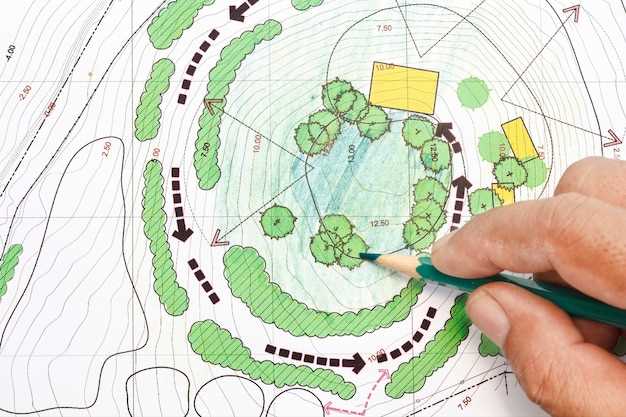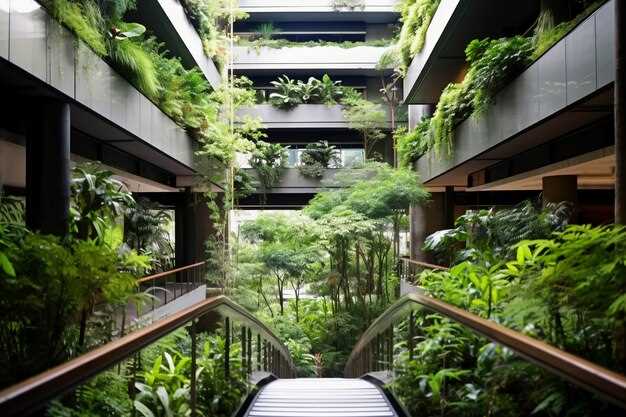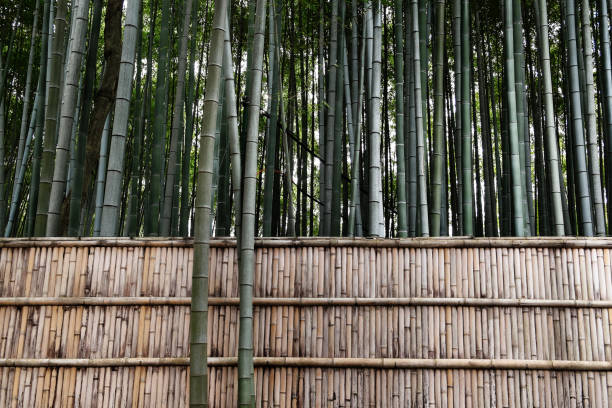Prioritize sustainability by weaving permaculture principles into your retreat masterplans. This approach not only nurtures the land but also enhances the overall experience for visitors by creating self-sufficient ecosystems that work in harmony with nature. Ensuring each segment of your retreat design contributes to a balanced, sustainable environment is crucial for long-term success.
Focus your efforts on creating multifunctional landscapes. Design your retreat spaces to include native plant species that contribute to erosion control and water management, reducing reliance on external resources. Additionally, these plants provide habitats for local wildlife, boosting biodiversity and creating immersive experiences for retreat-goers seeking reconnection with nature.
Optimize energy and resource use by harnessing local climate conditions. Consider incorporating earthworks like swales and berms to manage water flow naturally. This strategy not only conserves water but also enriches the soil and supports plant health, minimizing the need for artificial irrigation systems.
Consider the integration of food forests and edible landscapes within your retreat. These provide visitors with the opportunity to engage in sustainable agriculture practices, fostering a deeper understanding of food systems and personal wellbeing. This hands-on approach can lead to more meaningful retreats, resonating with visitors long after their stay.
Design Principles for Permaculture Retreats
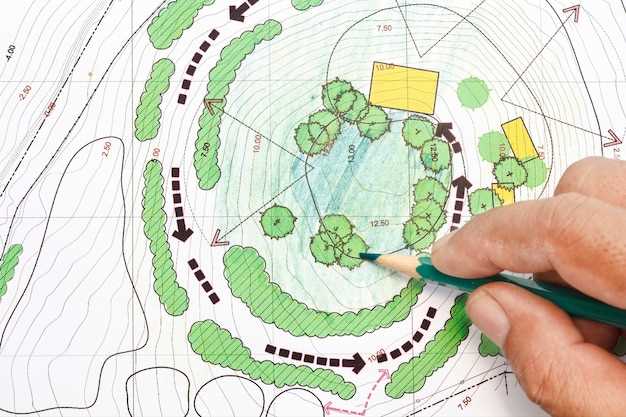
Embrace zoning to tailor environments that meet both human and natural needs harmoniously. Begin with Zone 0, the heart of your retreat, ensuring it sustains the entire system with minimal energy input.
- Understand the Land: Conduct a thorough site analysis, taking note of water flow, soil type, and existing vegetation. This knowledge directs the placement of elements.
- Maximize Diversity: Promote biodiversity by integrating complementary plant species. This method supports resilience and complex ecosystems.
- Enhance Edge Effect: Design interfaces where different ecosystems meet. These zones boost productivity and biodiversity, offering unique learning experiences.
- Plan Water Management: Implement a multi-zone water system that captures and reuses water efficiently. Consider swales, ponds, and gray water systems.
- Incorporate Natural Building Materials: Use local resources for construction, such as bamboo, straw bales, and earth, reducing environmental impact while promoting sustainability.
- Create Food Forests: Establish a diverse range of perennial plants that support wildlife and provide food throughout the year.
- Use Renewable Energy: Equip the retreat with solar, wind, or hydropower systems to ensure self-sufficiency and lower carbon footprint.
- Design Social Spaces: Integrate communal areas to enhance community interaction, learning, and relaxation, fostering a strong sense of community.
Remain attentive to feedback from the environment and visitors, adjusting the design to improve ecological health and user experience continually.
Key Elements of Permaculture Design
Begin by implementing the concept of zoning to organize your space effectively. Zoning involves arranging elements of the site according to their frequency of use and care requirements. For example, place herbs and vegetables needing daily attention in Zone 1, closest to living areas, while Zone 5, furthest away, should be left for wild, untouched nature.
Incorporate diverse plant polycultures rather than monocultures. Polycultures, found in nature, improve resilience and reduce pest issues. Companion planting, where certain plants benefit others, enhances growth. For instance, plant nitrogen-fixing legumes alongside vegetables to naturally enrich the soil.
Apply the principle of “catch and store energy” by harvesting rainwater and capturing sunlight. Install rainwater tanks to provide a reliable water source throughout drier seasons. Design garden beds and swales on contour lines to slow water runoff and increase soil moisture retention, which is crucial for plant health.
Strive for zero waste by setting up compost systems to recycle organic material back into the soil. Use kitchen scraps, garden waste, and even paper products to create nutrient-rich compost. This practice reduces landfill waste and enhances soil fertility, leading to healthier and more productive plants.
Encourage wildlife habitats to support biodiversity and ecological balance. Install birdhouses, insect hotels, and pollinator-friendly plants to attract beneficial insects and animals. This diminishes the need for chemical pest control and enhances the natural ecosystem services.
Engage the community by creating shared gardening spaces and educational workshops. Community involvement fosters knowledge exchange and collective care for the environment, strengthening the social fabric while enhancing the productivity and beauty of the garden.
Aligning Permaculture with Local Eco-Systems
Identify native plant species that have adapted to the local climate and soil conditions. These plants require minimal maintenance and provide habitats for indigenous wildlife.
- Soil Analysis: Conduct a thorough soil test to understand soil composition, pH levels, and microbial activity. This informs decisions about amendments and suitable plant species.
- Water Management: Utilize natural water sources like streams or ponds. Implement rainwater harvesting and contouring techniques to maximize water retention and prevent erosion.
- Climate Consideration: Choose plants that thrive in the specific climate zone, considering temperature variations, rainfall patterns, and seasonal changes.
- Biodiversity Focus: Encourage a variety of species, including insects, birds, and mammals. This fosters a resilient ecosystem, aiding pest control and pollination.
- Microclimate Creation: Use design elements such as windbreaks or shade structures to create supportive microclimates for sensitive plant species.
Research local ecological issues, such as soil degradation or invasive species threats, and align permaculture practices to address these challenges effectively.
- Prioritize rehabilitating degraded areas through practices like composting and green manures that enhance soil fertility naturally.
- Implement strategies to control or eliminate invasive species without damaging native populations, such as manual removal or introducing natural predators.
- Engage with local conservation organizations to stay updated on eco-system dynamics and community efforts, actively contributing to regional environmental initiatives.
Integrating these practices into permaculture designs creates sustainable and harmonious retreat environments that respect and enhance the surrounding ecosystem rather than disrupt it.
Incorporating Water Management in Permaculture
Implement efficient water management by collecting rainwater through the use of swales and ponds strategically placed throughout the site. Swales, shallow channels on contour lines, slow down and capture rainwater, allowing it to seep into the ground and recharge the aquifer, thus ensuring prolonged soil moisture. Position ponds at lower elevations within the property to collect and store excess water, providing habitats for aquatic species and serving irrigation needs during dry spells.
Utilize greywater systems to recycle water from sinks, showers, and laundry. By redirecting this water for irrigation, particularly for non-consumable plants, you reduce fresh water consumption significantly. Ensure the use of biodegradable soaps and detergents to avoid chemical build-up in the soil.
Plant native and drought-resistant species that are adapted to the local climate. These plants not only require less water once established but also support local biodiversity. Integrating a variety of plant species with varying root depths can enhance water retention and prevent erosion.
Mulching plays a critical role in moisture retention. By covering soil surfaces with organic material like straw, wood chips, or leaves, evaporation is reduced, and soil temperature is regulated. This practice, in turn, maintains soil health and reduces the need for additional watering.
Consider the implementation of keyline design to optimize water storage and distribution. This technique involves creating a pattern of plowed lines that run slightly off contour, guiding water downhill across the landscape, enhancing absorption, and minimizing runoff.
Regularly monitor and adjust the system based on seasonal variations. Evaluate water flow patterns and make necessary amendments to swales, ponds, and plant placement to adapt to changing conditions. By prioritizing these methods, a retreat can achieve a resilient and self-sustaining ecosystem.
Implementing Zoning for Efficient Land Use
Design your retreat masterplan by segmenting land into defined zones based on function and sustainability priorities. Begin by identifying microclimates and natural resources available on-site. Evaluate areas with varying sunlight exposure and wind patterns to assign specific activities or vegetation types to each zone.
Focus on the Zone 1 proximity to the central buildings, dedicating space to intensive vegetable gardens and herbs, ensuring easy access for frequent harvesting and maintenance. Use multifunctional plants like comfrey or perennial herbs to minimize labor while enhancing biodiversity. Reserve Zone 2 for larger permaculture plots such as orchards or larger animal enclosures, supporting less frequent visits.
Allocate Zone 3 for managed sustainable forestry or larger-scale farming, establishing windbreaks and erosion control measures with native trees and shrubs. Consider integrating agroforestry to maximize timber and non-timber forest product yields efficiently, reducing the ecological footprint and enhancing habitat diversity.
Incorporate Zone 4 for semi-wild areas to support wildlife habitat, ensuring ecological corridors that connect natural resources across the landscape. Establish low-maintenance systems like passive water retention swales and selective tree planting to boost ecosystem services such as pollination and pest control.
Dedicate Zone 5 to undisturbed natural ecosystems, promoting biodiversity conservation and education opportunities for retreat visitors. Encourage minimal intervention to allow natural processes to maintain environmental balance, offering a space for contemplative activities and learning about native ecology.
Utilize pathways and fencing strategically to delineate zones, ensuring fluid transitions and reducing overlap that might cause resource competition. Regularly review and adapt zoning plans based on ecological feedback, ensuring sustainable practices align with retreat objectives and visitor experiences.
Eco Resort Gardens: Sustainable Landscape Planning
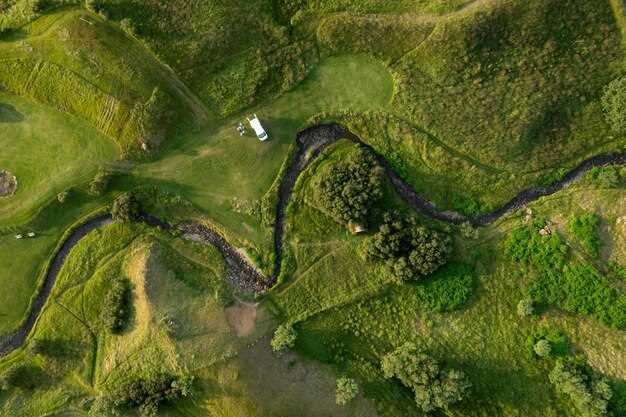
Start with rainwater harvesting systems to collect and recycle water for garden irrigation, reducing reliance on external water sources. This practice not only conserves water but also ensures plants are hydrated without overusing critical resources.
Select native plant species that thrive in local climates, minimizing the need for pesticides and reducing maintenance costs. Native plants naturally attract local wildlife, supporting biodiversity and creating a harmonious environment for guests and nature.
Integrate companion planting techniques to enhance plant health and productivity. For instance, combining plants like tomatoes and basil can mutually repel pests and improve growth. Such methods improve soil fertility and reduce the need for artificial fertilizers.
Implement rotational grazing if the resort includes animal husbandry, which enhances soil quality and prevents overgrazing. Managed livestock can turn weeds into valuable nutrients, keeping grounds healthy and vibrant.
Use permaculture zoning principles to organize garden areas by their maintenance frequency. Place high-maintenance edible gardens near living spaces and low-maintenance areas farther out. This arrangement optimizes resource allocation and minimizes daily upkeep requirements.
Create a composting program using organic waste from the resort to enrich garden soil. This sustainable practice reduces waste and provides nutrient-dense compost to support plant growth, closing the loop in nutrient cycles.
Opt for permeable pavement materials to enhance water absorption into the ground, reducing runoff and erosion. This choice supports natural water cycles while maintaining paths that are aesthetically and functionally suitable for guest use.
Creating Biodiverse Plant Communities
Choose native and adaptive plant species suited to the local climate and soil conditions to enhance biodiversity. Start by selecting a variety of trees, shrubs, and groundcovers that offer different heights and textures. Incorporate fruit-bearing plants and those that flower at different times of the year to provide continuous food sources for pollinators and wildlife.
Encourage diversity by arranging plants in guilds or clusters, where species support each other’s growth and health. Combine nitrogen-fixing plants with nutrient-demanding companions. For instance, pair leguminous plants like clovers with fruit trees, enabling mutual benefits through shared resources.
Prioritize companion planting strategies to naturally control pests and improve soil health. Introduce aromatic herbs and flowers such as marigolds and basil that deter harmful insects and attract beneficial ones like ladybugs and bees.
Utilize permaculture zoning to maximize plant interaction and ease of maintenance. Place high-maintenance and frequently harvested plants closer to living areas, while reserving outer zones for larger, perennial species. This organized approach facilitates efficient energy use and optimal plant health.
Design water-wise gardens using swales and rain gardens to manage runoff and water retention. Select drought-tolerant species that thrive in less irrigated areas, reducing water consumption and promoting resilience during dry spells.
Monitor and adapt the ecosystem by regularly observing plant health and adjusting layouts as needed. This ensures that the plant community remains balanced, productive, and self-sustaining in the long term.
Soil Regeneration Techniques in Garden Planning
Begin by implementing crop rotation to prevent nutrient depletion. Rotate crops such as legumes, which fix nitrogen, with nitrogen-demanding plants like leafy greens to maintain soil health.
Incorporate cover cropping during the off-season to protect the soil. Use plants like clover or vetch, which act as green manure, enriching the soil with organic matter when tilled back.
Practice no-till farming to preserve soil structure and biodiversity. Avoid turning the soil; instead, add compost and mulch on top to build rich, fertile ground over time.
Add organic matter through composting. Use kitchen scraps, green waste, and manure to enrich the soil with nutrients necessary for healthy plant growth.
Enhance soil biodiversity by introducing worms and beneficial nematodes, which aerate the soil and help suppress pests naturally.
Create swales on slopes to manage water runoff, preventing erosion and enhancing water infiltration. These leveled earth banks capture rainwater, allowing it to seep slowly into the soil.
Implement biochar as a soil amendment. This charcoal-like substance can improve soil fertility and aid in carbon sequestration, making it an excellent tool for long-term soil health.
Test soil regularly to monitor pH levels, nutrient content, and microbial activity. This information helps tailor soil amendments and ensures optimal plant conditions.
Integrating Renewable Energy Sources in Landscape Design
Install solar panels on south-facing slopes or rooftops, where they capture the maximum amount of sunlight. Opt for thin-film solar panels if flexibility and aesthetics are a priority. Situate them near the retreat’s main facility to power essential services while minimizing energy transmission losses.
Consider small-scale wind turbines in open areas with consistent wind patterns. Vertical axis wind turbines can be less intrusive and more adaptable to varied wind directions. Evaluate wind speed data to ensure that turbine placement yields efficient energy production.
Incorporate micro-hydropower systems along streams or rivers. These systems can effectively generate sustainable energy if the retreat grounds include flowing water sources. Ensure compliance with environmental regulations pertaining to local waterway modifications.
Integrate geothermal energy solutions by installing ground source heat pumps. This method provides efficient heating and cooling using stable underground temperatures. Factor in soil composition and space availability to determine the viability and design of the geothermal loop system.
Enhance passive design techniques by utilizing natural daylight and thermal massing. Position large windows to maximize sunlight during winter, and consider overhangs to provide shade in summer. Use materials like stone or concrete that absorb heat for gradual release, enhancing natural temperature regulation.
Promote biodiversity by planting native species around renewable energy installations. This approach not only blends energy structures into the landscape but also supports local ecosystems. Choose plants that complement energy systems by reducing erosion or providing shade where necessary.
Designing for Visitor Engagement and Education
Create interactive spaces that invite guests to participate actively. Envision a sensory garden where visitors can touch, smell, and even taste various plants. Such gardens serve as a practical way for guests to learn about native flora and their uses in permaculture. Incorporate signage that explains each plant’s role within the ecosystem, detailing how it contributes to biodiversity and sustains wildlife.
Host workshops that empower visitors with hands-on skills. Organize sessions on composting techniques, rainwater harvesting, or building raised beds. These activities not only educate but also provide guests with tangible practices they can implement in their own lives. To accommodate varying levels of expertise, offer beginner, intermediate, and advanced sessions.
Utilize a dynamic approach to visitor interaction with an educational app. Develop app features that offer self-guided tours, allowing guests to explore at their pace. Integrate AR (Augmented Reality) technology to provide additional layers of information, such as historical contexts or possible future developments of the retreat’s permaculture initiatives.
| Strategy | Benefit |
|---|---|
| Sensory Gardens | Enhances sensory learning and appreciation of native plants |
| Hands-on Workshops | Equips visitors with practical permaculture skills |
| Educational App | Provides personalized learning experiences and deeper engagement |
Facilitate community-building events like permaculture clubs or guest panels with experts in sustainable practices. Invite guests to share their experiences and learn from one another, fostering a sense of belonging and shared purpose. By integrating these strategies into your retreat’s masterplan, you will nurture a community of informed and engaged visitors.
Q&A:
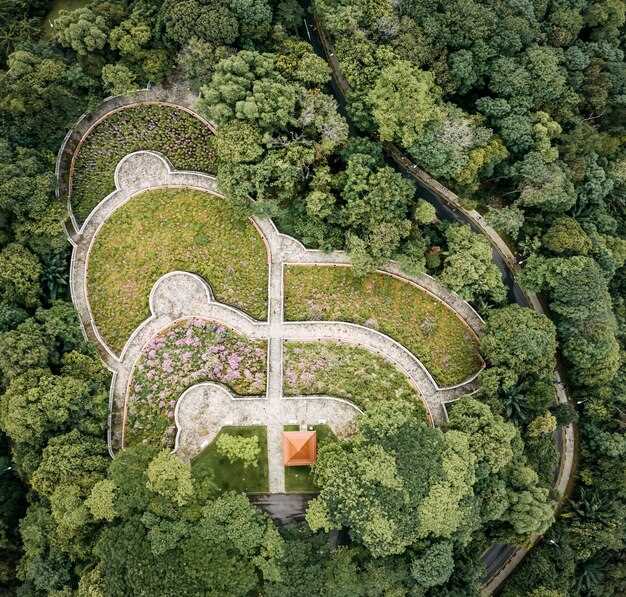
How does permaculture landscaping improve the sustainability of a retreat?
Permaculture landscaping enhances the sustainability of a retreat by creating ecosystems that are self-sufficient and energy-efficient. It involves using native plants that require minimal irrigation and maintenance, thus preserving water and soil resources. Additionally, permaculture promotes biodiversity by integrating a variety of plant species, which supports a more resilient environment. The principles of permaculture, such as capturing rainwater and composting, further reduce the ecological footprint and operational costs of the retreat.
What are some common permaculture techniques that can be applied to a retreat masterplan?
Some common permaculture techniques include creating swales to manage water runoff, implementing food forests that combine fruit and nut trees with smaller edible plants, and establishing herb spirals for compact and diverse planting. Additionally, using natural building materials and designing natural habitats for local wildlife are practices that integrate permaculture principles. These techniques collectively work towards creating a balanced ecosystem within the retreat.
Can permaculture landscapes be aesthetically pleasing while remaining functional?
Yes, permaculture landscapes can be both beautiful and functional. By strategically placing artistic elements like natural stone paths and water features, and incorporating a diverse range of plants with varying colors, textures, and heights, you can create a visually appealing environment. The integration of ornamental and edible plants allows for a landscape that is not only pleasing to the eye but also serves practical purposes like food production and biodiversity support.
What are the financial benefits of incorporating permaculture into a retreat?
Incorporating permaculture into a retreat can lead to significant financial benefits over time. The initial investment in permaculture design may be higher compared to traditional landscaping, but it often results in reduced costs for water and maintenance. By growing food on-site, retreats can also decrease their reliance on external food suppliers, potentially lowering grocery expenses. Furthermore, the sustainable practices attract eco-conscious guests, potentially increasing bookings and revenue.
How do I start integrating permaculture principles into an existing retreat design?
To start integrating permaculture principles, first evaluate the retreat’s current landscape and identify areas for improvement. Consider working with a permaculture designer to assess site-specific factors like the climate, water sources, and soil health. Begin with small changes, such as adding composting areas or rainwater harvesting systems. Gradually implement more complex elements, such as planting guilds or food forests, to transform the space into a cohesive permaculture environment while adapting to existing structures.
